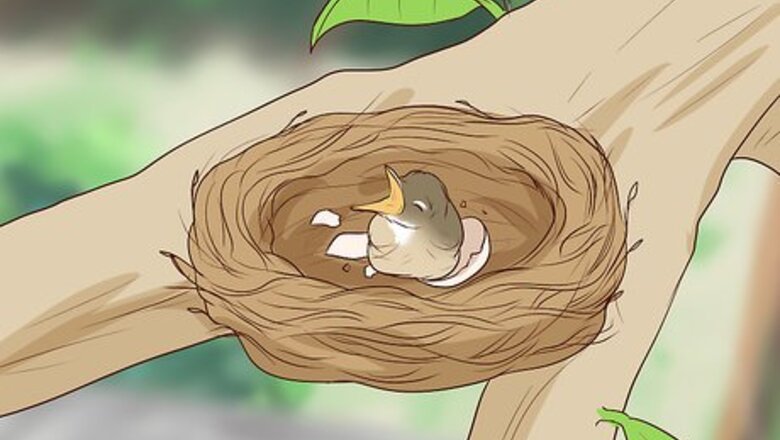
views
Reuniting a Nestling With Its Parents

Do not remove a bird from its nest. If you find a baby bird all alone in its nest, don't assume its mother abandoned it. It's more likely she's off getting food for her baby and will return soon. No matter how much it's chirping and crying, never remove a baby from its nest. Think of it as kidnapping.
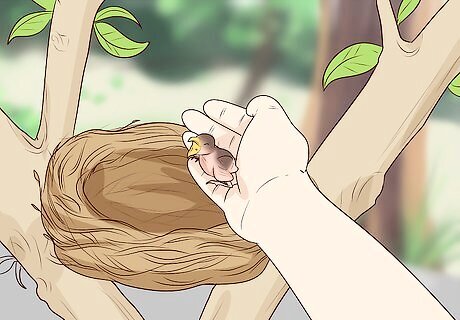
Return nestlings to the nest. A nestling is a young bird that hasn't grown feathers yet. They sometimes fall out of their nests, which puts them into danger. The best thing you can do for a nestling is to NOT take it home, but try to return it to its nest. Search nearby trees and bushes for an empty nest. If you can find one, place the bird back into its nest so it can wait for its mother to return. Remember to be gentle when handling it!
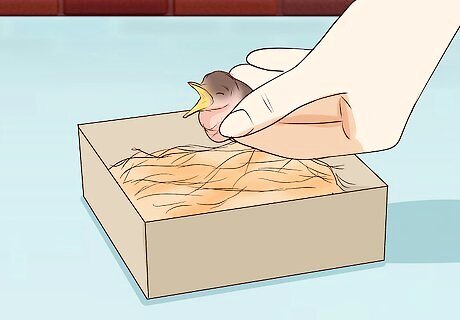
Make a makeshift nest if you can't find the real one. Birds can be quite good at hiding their nests in nature. If you can't find the nest, you should still try to reunite the baby with its mother by making a manmade nest for it to wait in. Fill a small box or bowl with dried grass or paper towels, and place the bird in its makeshift nest. Do not use fresh grass, because that could make the baby bird cold You can also use a basket with a handle, then hang the basket from a nearby tree branch. Leave this "nest" where you found the bird. Wait to see if a parent bird comes by to take care of the baby.
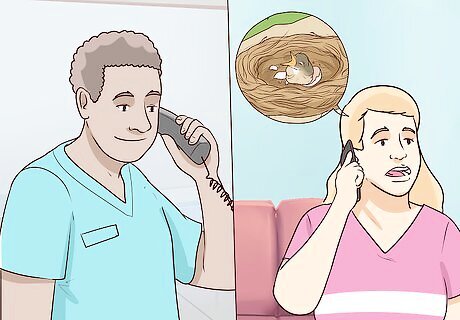
Call the professionals if no parents come. If, after waiting for an hour or so, you haven't seen any parent birds come to take care of the baby, you should reach out to experts. Licensed wildlife rehabilitation specialists will be best equipped to keep the baby bird healthy and happy. If you can’t find a rehabilitator on your own, call vets, bird stores or the local Audubon Society and ask them to put you in touch with one. The wildlife rehabilitator will want to know where you found the bird, so he or she can return it to its home when it's healed. Be as specific as possible.
Keeping Fledglings in the Wild
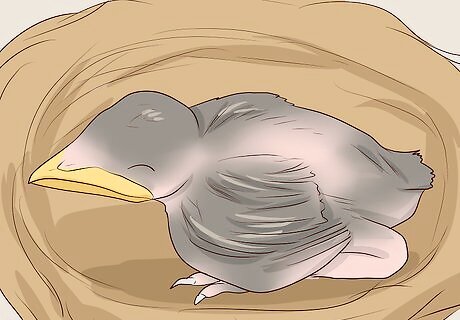
Look for feathers. If the baby bird has feathers, it’s no longer a nestling — it’s a fledgling. These older birds are learning how to fly.

Watch the fledgling for injuries. It's quite common for fledglings to be out of the nest. As part of their flying lessons, they jump from the nest and float to the ground. Likely, the fledgling's parents are nearby, teaching it how to fly. If the fledgling seems to be limping or favoring a wing, it may be injured. If you see no evidence of injury, just leave it alone. Being out of its nest is a normal part of a fledgling's life.
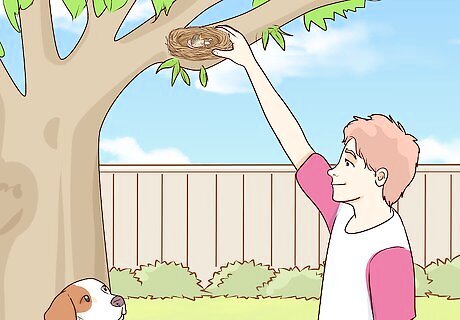
Move healthy fledglings if they are in danger. Scan the area — do you see dogs, cats or other threats nearby? Even if the fledgling is healthy, you may need to move it to protect it from immediate threats on the ground. Place the bird in a bush or high enough up a tree to keep the fledgling out of predators' reach.

Watch and wait for the parents. Give the parents about an hour to come back and check on the fledgling. If, after that time, the parents have not appeared, you need to seek professional help for the fledgling.

Contact a wildlife rehabilitation center. Again, it's very important to remember that wildlife rehabilitators are best equipped to take care of the bird. Find a licensed specialist who will be able to give it a better shot at a healthy life. Remember to provide specific information about where the bird was found.
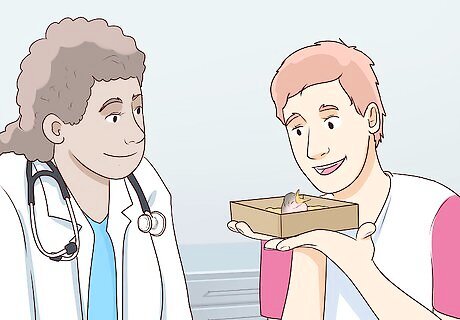
Take injured fledglings to get medical treatment. If, after watching the bird for a couple minutes, you decide it looks sick or injured, you need to get it help. Gently scoop the bird up and place it in a manmade “nest.” Do not try to treat an injured bird by yourself. The best thing you can do for any injured animal is to get professional medical attention for the animal. Note that many veterinarians won’t treat wild animals. They can point you to people who will.
Caring for the Bird Until Wildlife Rehabilitation Comes
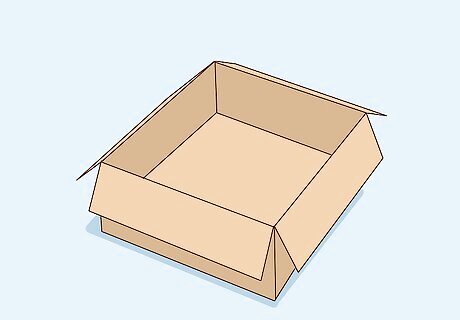
Find a small cardboard box or plastic bowl. Nests are pretty small, and enclosed spaces make baby birds feel safe and secure. Don't place a scared baby in a giant box. Give it a nice, small space to hang out in.
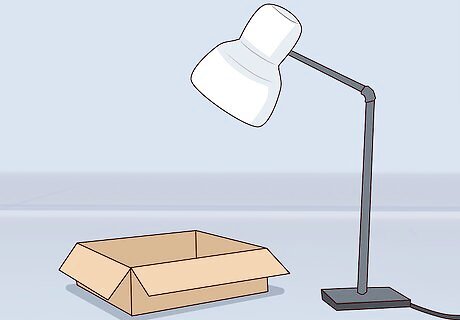
Place a heat source in the box. Baby birds need more warmth than humans — although we're happy in a room that’s 70–75 °F (21.1–23.9 °C), a baby bird will need an environment of about 85 °F (29 °C). A heat pack or hot water bottle will do the trick. You could also use a heat lamp. Don't use scalding hot water in the water bottle. Too much heat will hurt the bird. You should be able to leave your hand under the lamp or on the warming device without burning yourself or feeling uncomfortable.
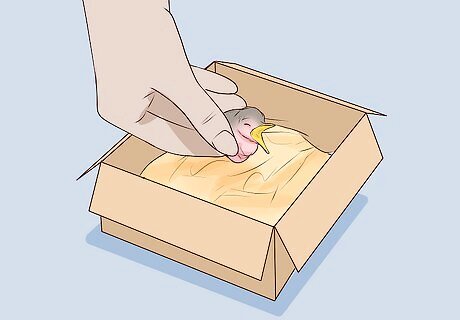
Put the bird in the "nest." Overhead lamps should be a comfortable distance from the bird to keep it from overheating. If using a direct heating method like a hot water bottle, don't put the bird in direct contact with it. Instead, arrange paper towels over the heat source in the shape of a nest, and place the bird on top of them.
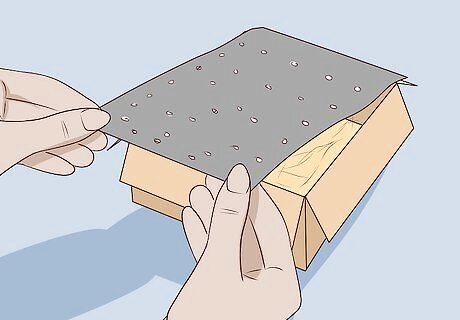
Cover the box. The quieter and darker you can make the "nest," the safer the baby bird will feel in this strange new place. Cover the box with a light blanket or with newspaper, but make sure to leave air holes so it can breathe. You might also place the box inside a cat or dog carrier.
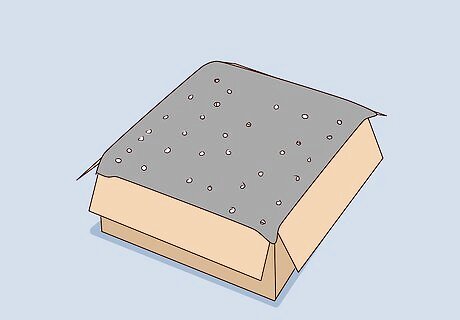
Leave the bird in an isolated space. Your little bird will be happiest when left alone in a quiet area. Make sure children, pets and anything else that might scare the bird stay out of the room where you place the "nest."

Don’t handle the bird more than needed. You may think the baby bird is adorable, but it might find you terrifying. Resist the urge to hold the bird for your own pleasure. Touch it only as much as you need to get it into its makeshift nest.
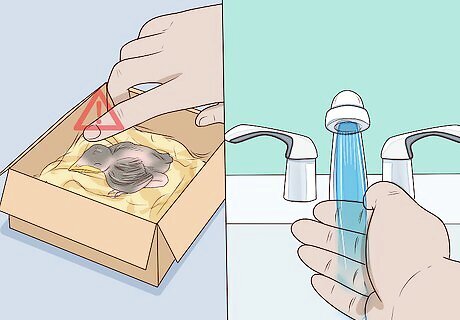
Keep your hands and area around the "nest" clean. Birds can carry any number of germs and diseases. Every time you handle the bird, wash your hands immediately. Keep the bird away from the kitchen or anywhere you handle food. You don't want any fecal matter getting into your food.
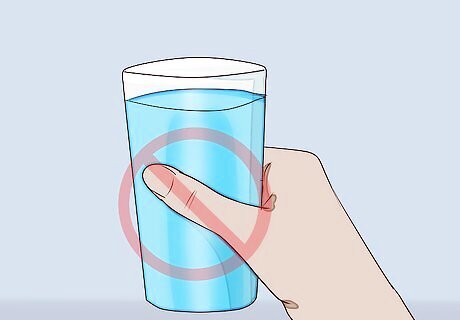
Do not give the bird water. You might find it strange, but baby birds do not drink water. If you try to give it water through a syringe or eyedropper, water can get into its lungs and cause death.
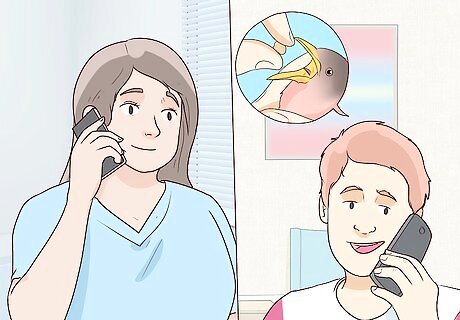
Ask a wildlife rehabilitation specialist for feeding advice. Contact the wildlife rehabilitation center that will be taking the bird in and ask whether you should feed the bird. If the center will take the bird in soon, representatives of the center may tell you to just wait until they can feed it themselves. However, if there's a delay, follow their expert advice on what to feed the baby. Not all birds eat the same thing. Giving it milk, bread or other foods that "sound right" may cause diarrhea or other health problems. Follow the wildlife specialist’s directions carefully.
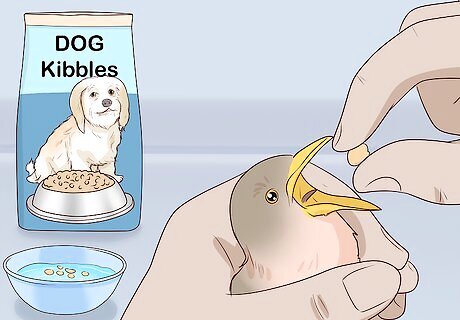
Substitute dog kibble for seeds. Do this only if you are certain that the bird eats seeds (e.g., doves or pigeons). In the short term, you can replace the bird's natural food with dog kibble until the bird is under expert care. Soak the kibble in water for an hour using a ratio of 1 part kibble to 2 parts water. Feed the bird small, pea-sized pieces of the now-spongy kibble. Make sure it's not too wet. Remember, you don't want water to get into the baby's lungs! You can also take a trip to the pet store and buy baby parrot hand-feeding formula. Follow the directions on the packaging to prepare the formula.
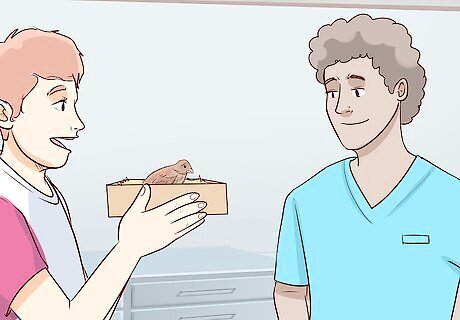
Take the bird to a wildlife specialist when the time is right. Once you’ve contacted a wildlife rehabilitator, you will be told when you can bring the bird in. Until then, keep it as calm and quiet as possible, and just leave it alone. Some veterinarians will take in wild birds and transfer them to wildlife specialists for you. Ask local vets if they'll do that for you.











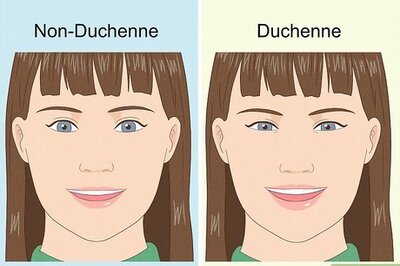



Comments
0 comment